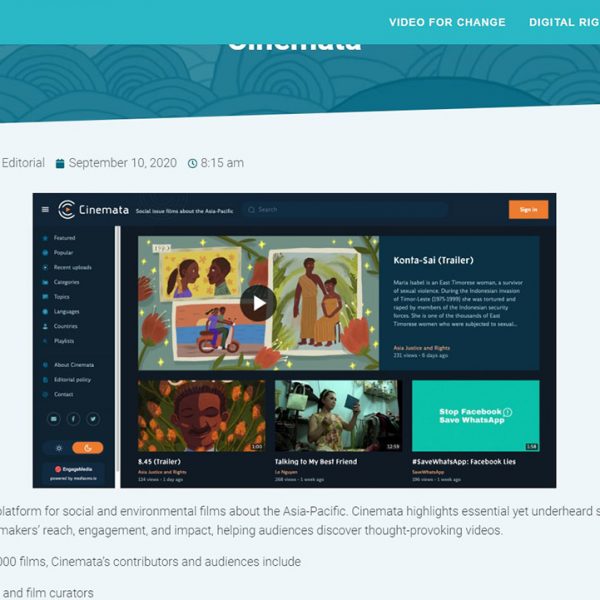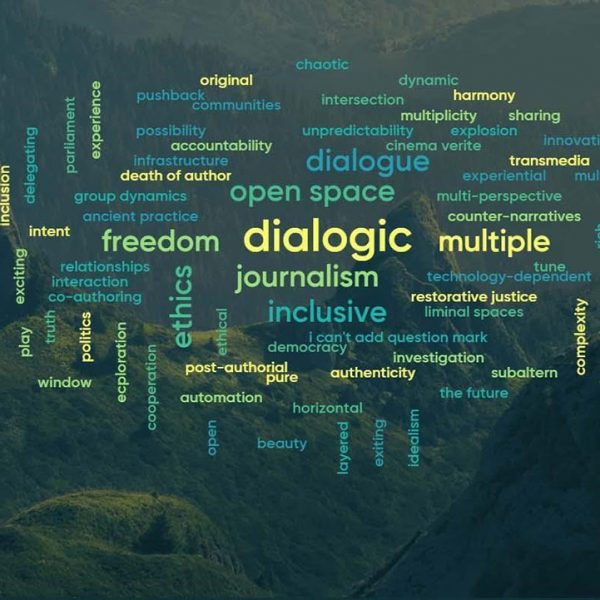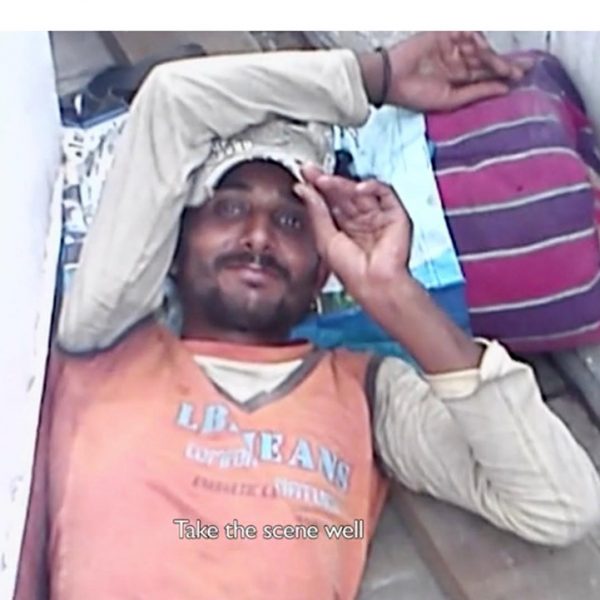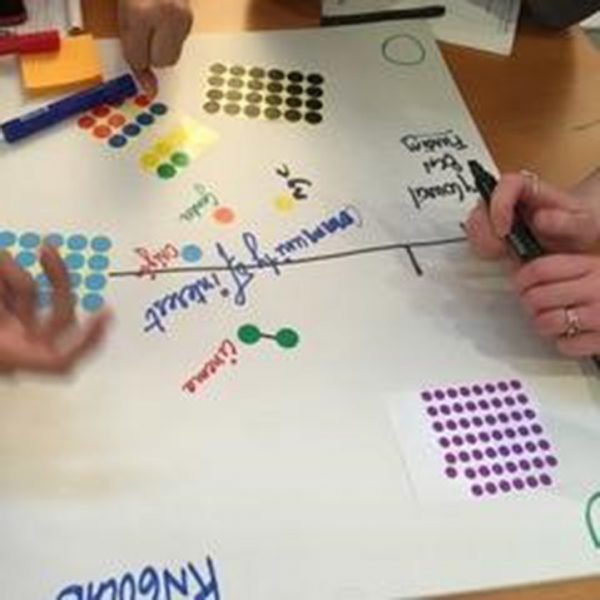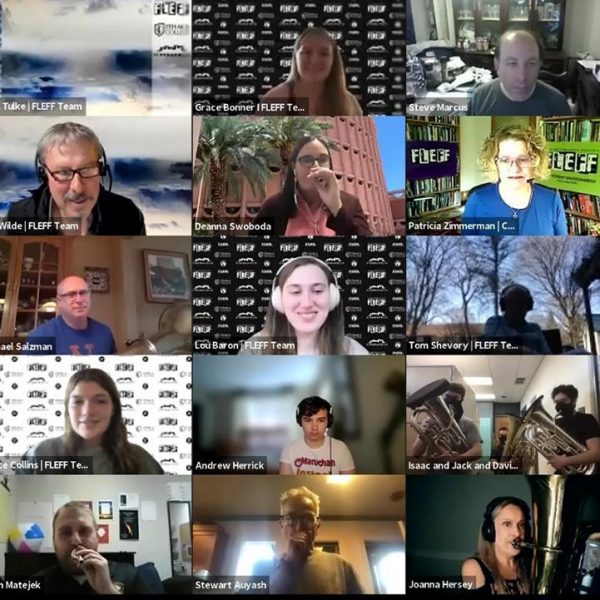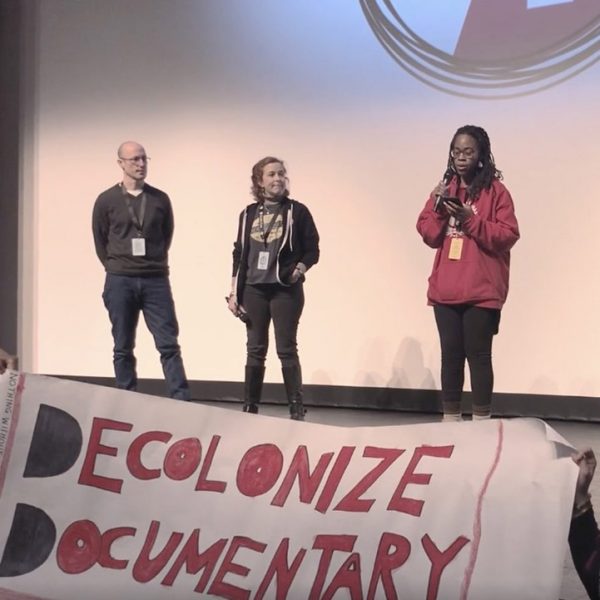As a practical exercise, the MDOCS group focused on mapping out community agreements for a hypothetical new collective they could create. The IAWRT group (including participants from across the world) combined and refined project priorities to move past national boundaries and plant seeds for new cross-cultural production plans.
I had to look back to my spiral-bound notebook to recall what I was wondering about co-creation and documentary practice in those first months of the pandemic in 2020. How will we do things differently now? How must we do things differently now?
As Lauren Berlant and Kathleen Stewart have written in The Hundreds (2019), “collaboration is a meeting of minds that don’t match.”
The monthly Zoom convenings called “Co-creation in Documentary during Pandemic and Protest” opened up ways to think through and act in new ways during the pandemic. From our working group—Reece Auguiste, Helen De Michiel (myself), Dale Hudson, Brenda Longfellow, Elizabeth Miller, Dorit Naaman, and Patricia Zimmermann—to other filmmakers and scholars locally and internationally, we expanded an array of structures and strategies for co-creative thinking during the pandemic and its separations. We used a simple format to keep ourselves focused and moving along. With a brief framing introduction pointing to three discussion questions, the facilitators welcomed everyone. For the June 2021 convening, “Enacting Co-Creative Futures,” we chose these prompts: “What did you do well this past year?” “What did you learn that was new for you?” and “What will you do differently in the future?”
Breakout groups discussed the first question for fifteen minutes. From there, we reconvened as a full group. Each break out group’s note-taker reported their conversation highlights. We repeated this format for each question. In the final thirty minutes, we left space for each participant to point to ideas, connections, or responses they would take away. In the last few minutes, Zimmermann, who had been listening and taking notes, synthesized and recapped the issues and ideas that came up. When the ninety-minute mark arrived, we said goodbye until the next time.
Cumulatively, the monthly meetings broke through global isolation and confusion, and opened up possibilities that helped to keep us going. The hospitality custom we adopted served these gatherings well: all who attend a session come in on equal footing, with intellectual and experiential insights to contribute. People trusted the process. They reported on how they were coping and how they were trying experiments to teach film in a co-creative way. They shared project ideas and tactics to fortify ourselves for a hugely vague and uncertain future.
This interest in co-creative thinking and production practice then led Liz Miller and me to accept an invitation as visiting Fellows in June 2021 at the Skidmore College MDOCS Storytellers Institute virtual residency, where the theme was co-creation. Once again, we could only meet and gather with the other participants through Zoom.
Our collaboration, called “In-Transit,” dug deeply into the liminal states we found ourselves working through during the pandemic year.
What would we make of the work we were doing together, or alone in isolation? How could we try more co-creative experiences when field production was dangerous if not impossible? What other ways were emerging to think about breaking through old habits and standards? How could we effectively develop this practice while avoiding fantasies about returning to the “normal that was?”
Given the severe limitations of a virtual, online artist residency, we decided to design three different, fast-paced workshops modifying an idea-generating method called cardstorming. This group idea-generating process quickly produces magic by encouraging and organizing a collective mind-melding of possibilities and patterns. We wanted to see how virtual cardstorming could play out among diverse creative groups of individuals with different interests and approaches.
For the first session, aimed towards our co-creation working group, the straightforward inquiry question was “how can we talk about co-creation now?” The writers, hesitant at first, played along with us to brainstorm three to five word ideas. Over the span of a ninety-minute session, doubts vanished, and we clustered and organized unedited ideas into a coherent map with the online collaboration tool Miro.
A week later, we shared the same method with the Storytellers Institute cohort. After those two rehearsals, we brought it to the international group of women filmmakers and journalists from the global organization, International Association of Women in Radio and Television (IAWRT). The focus question for both groups was “What are some urgent creative directions we can take to re-animate and develop our collective documentary vision?”
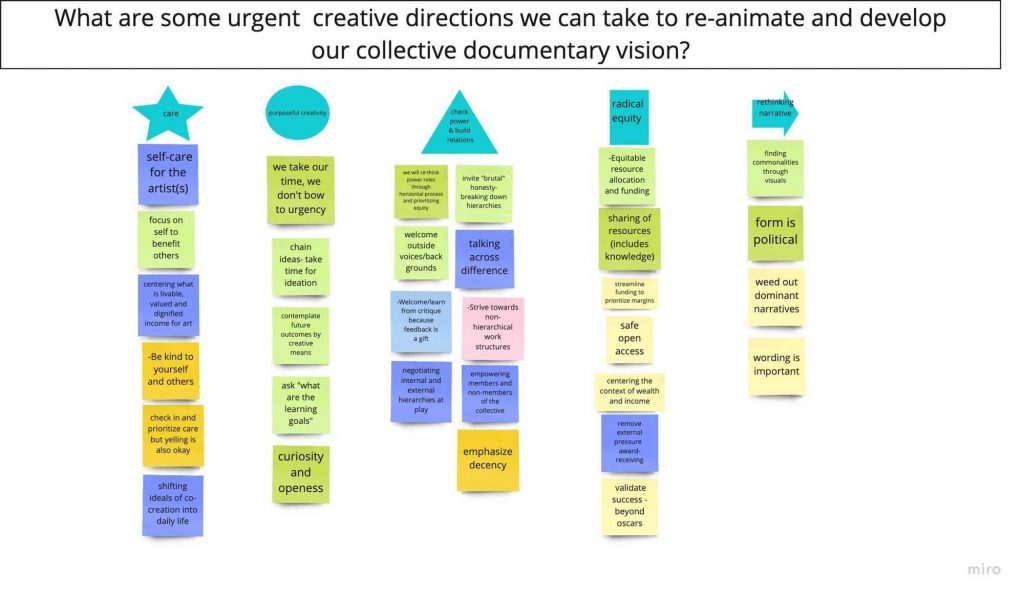
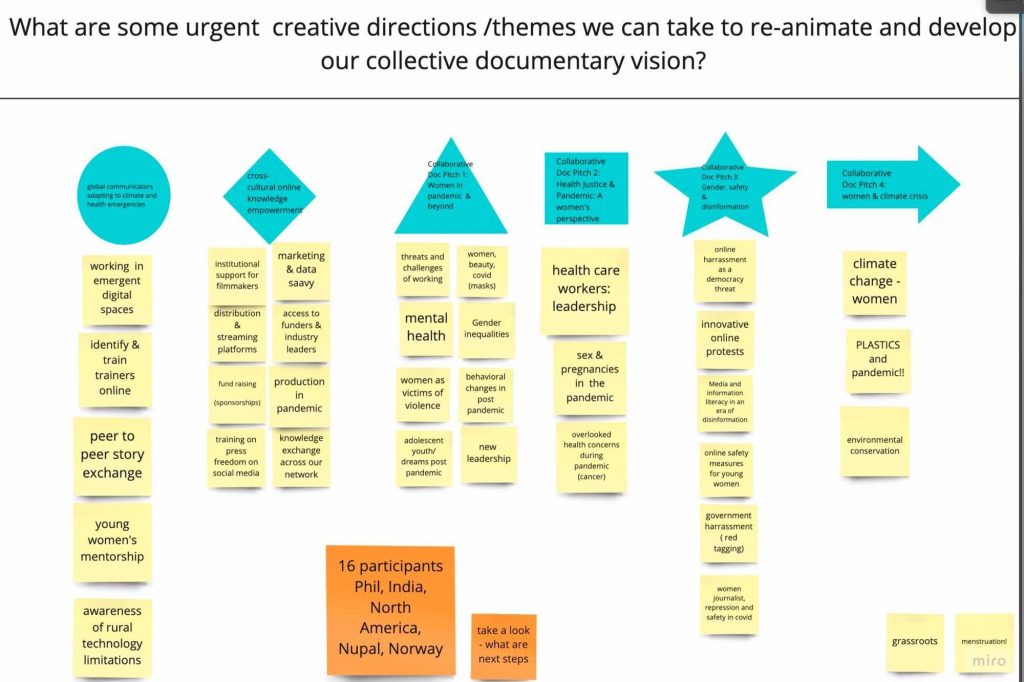
Liz and I gave ourselves permission to embrace and learn from imperfection, uncertainty and potential failure. The final objects—the Miro post-it boards—remained as ephemeral representations to remind us of the thick, multivalent conversations across generations, experiences and national borders.
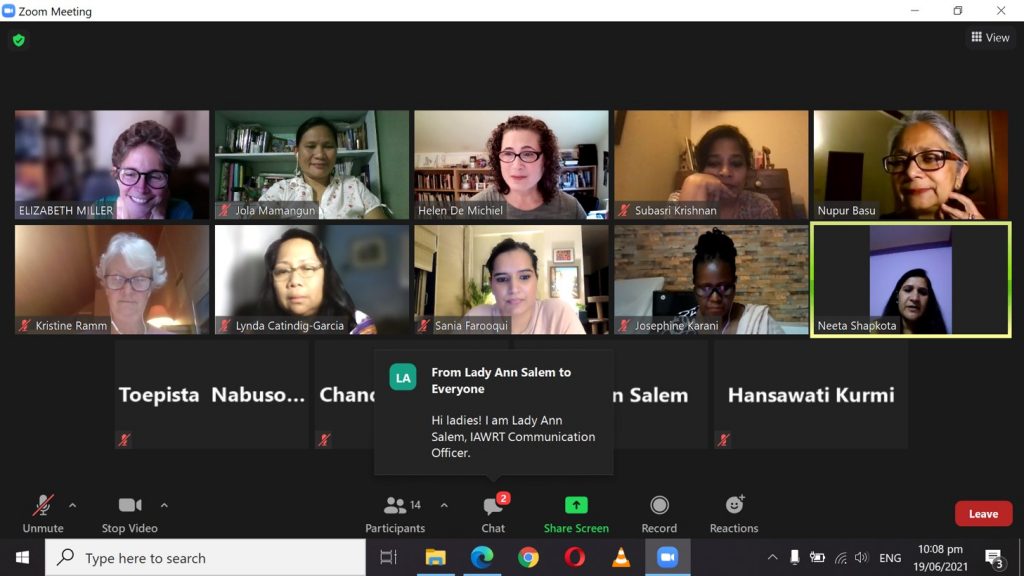
Co-creation adopts a particular stance about how to make work together while intermingling relationships, both agreeable or disagreeable. Organizational development practitioner Adam Kahane (Collaborating With The Enemy, 2017) calls this model of working stretch collaboration. He writes, “Stretch collaboration requires us to keep moving and trying things with the understanding that we can’t control the future, but we can influence it. The definition of success in this kind of collaboration isn’t to come up with a solution, but to be working toward it.”
While working towards common understanding, the practice does not limit subject matter, nor erase each individual’s contributions to the whole. It is not defined by techniques, but rather by an awareness toward the delights, conflicts, and consequences of relational mediamaking.
Take a moment to consider how this actively engaged perspective from beginnings to endings of a documentary project or a class can change from anxiety-filled, perfection-seeking burdens to joy-filled discoveries that grow and change over time.
For me, this is a much-welcomed invitation to let go of old habits that no longer fit the ongoing pandemic era we face. As I look back at these ephemeral Miro boards from our cardstorming sessions, I wonder—what new energies and co-emergences are gaining momentum across the virtual times and spaces of documentary practice? What new territories of interlogues, where different people and groups enmesh within meaningful yet unresolved exchanges, will form?
In this time of pandemic and protest, it now seems that we are always in-transit.
# # # # #
Helen De Michiel makes films, writes and teaches in the San Francisco Bay Area. Along with Patricia Zimmermann, she co-authored Open Space New Media Documentary: A Toolkit for Theory and Practice. She is on the faculty in the Film Dept. at The California College of the Arts in San Francisco. She is completing a new documentary, Between the Sun and the Sidewalk, about youth fighting for democracy in California’s Central Valley.
# # # # #
